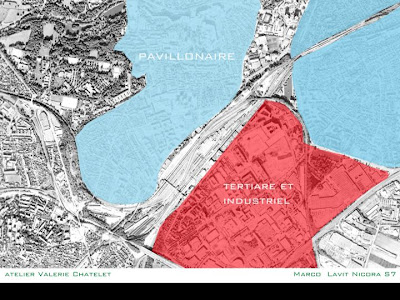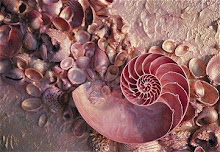(CNN) -- CNN spoke to Ken Yeang, an architect and ecologist, and the principle of the UK practice of Llweleyn Davis Yeang about his work to combine high rise architecture and environmental awareness.
CNN: How does being an ecologist relate to being an architect?
Ken Yeang: The ecologist has a much more comprehensive and holistic view of the world. We're looking at the natural environment as well as the human built environment and the connectivity between the two -- how do the natural environment and the human-built environment interact and interface with each other. That means when we design a building we're not looking at it as an art object by itself. We're looking at its relationship with the natural environment and how the two interface.
CNN: What's your inspiration behind bringing ecology and architecture together?
KY: Biology I suppose. In my heart I believe that biology is the beginning and the end of everything. It's the biggest source of ideas, the biggest source of invention. Nobody can invent better than nature and so if you like nature is my biggest source of inspiration.
CNN: What exactly is eco-design? How are the building designed with these principles different from regular buildings?
KY: Eco-design is designing in such a way that the human built environment or our design system integrates benignly and seamlessly with the natural environment. We have to look at it not just as designing a building as an independent object in the city or in the site where it's located. We have to look at it in the context of the characteristics of the site in which it's located, the ecological features and we have to integrate with it physically, systemically and temporally.
Physical integration means integrating with the physical characteristics of the place: Its topography, its ground water, its hydrology, its vegetation and the different species on the particular site. Systemic integration is integrating with the processes that take place in nature with our human built environment: The use of water, the use of energy, the use of waste and sewers and so forth. Both the human and the natural must blend together, so there will be no pollution and no waste. Temporal integration, means integrating the rate of our use of the resources in the earth and its material, and the rate of replenishment.
CNN: What are the advantages and approaches of the more holistic approach to building?
KY: I think buildings should imitate ecological systems. Ecological systems in nature before we had human beings you know interfere with them exist in a state of stasis -- they are self-supporting, self-sustaining.
Don't Miss
There are many characteristics in the ecosystem that we could imitate. For instance in most ecological systems you have a composite, biotic components as well as abiotic components acting together to form a whole, whereas in a human built environment most of the components are abiotic or they are inorganic. One of the first things we need to do is to complement the inorganic components with more organic components, and to make them interact to form a whole.
If you look into the way that materials are used in an ecological system you'll notice that you'll find that there is no waste. The waste of one organism becomes food for another and everything's recycled in an ecological system whereas in our human built environment there's a throughput system. We use something then we throw it away. But natural factors don't go away, they have to go somewhere so most times it either ends up in the ground or has to go to a landfill somewhere. We have to imitate nature and try to re-use everything we make as human beings or recycle them -- when we cannot re-use or recycle them we should try to reintegrate them back into the natural environment.
Another process that we should imitate is that in nature the only source of energy is from the sun. So in ecological systems everything comes from the sun through the process of photosynthesis whereas now in human built environment our source of energy is from fossil fuels, renewable, wood energy or hydro-energy but it is not from the sun. So until we are able to operate and run a human built environment by imitating photosynthesis it will be a long while before we can have a true eco-system.
CNN: Can the work you do be used to improve the ecology of current buildings?
KY: Yes. We shouldn't just look at new buildings but at existing stock building because that's an even greater problem than the new buildings being built. The renovation of existing buildings and making them green is just as important as designing new green buildings.
CNN: What would you do to an existing building to make it greener?
KY: I think some of the ways we could make these buildings environmentally friendly, is just common sense. Better use of space, improving the insulation, getting more daylight into the buildings, reducing the energy consumption of the air conditioning and heating systems, making sure that the internal air quality is good, that we have increased natural ventilation opportunities in the mid seasons. You know these are some of the things we can do.
CNN: Can you tell us a little bit about the EDITT tower in Singapore?
KY: EDITT Tower is a project where we wanted to exemplify all our ideas in one single building. I should add it is a tower and towers are the most unecological of all building types. Generally a tower uses 30% more energy and materials to build and to operate than anther structure, but towers, as a built form, will be with us for a while, until we find an economically viable alternative. My contention is that if we have to build these towers then we should make them as humane and as ecological as possible. It's a dirty job but somebody has to do it.
In the EDITT tower we tried to balance the inorganic mass of the tower with more organic mass, which means bringing vegetation and landscaping into the building. But we didn't want to put all the landscaping in one location. We wanted to spread that over the building, integrate it with the inorganic mass and that we wanted to have it ecologically connected. So we've put the vegetation from the ground all the way up the building and that whenever the building.
Then we wanted it to be low energy, so we had photo voltaics in its façade particularly facing the east and west side and on its roof so it would have its own energy source. We also wanted to collect water so that we could be independent from the water supply. We put water collection on the roof, but because the tower has a very small roof area we had sunshades which were scallop shaped so we could collect rainwater through them as well. So in many ways it feels like a human made ecosystem in a tower form.
CNN: Do you think cities around the world are ready for this new kind of building? Are we seeing a move towards better sustainable buildings?
KY: I think planners are aware of this. They've been aware for years but they have not been able to implement it because their bosses don't let them implement it. So for instance sustainable urban drainage system is extremely important but a lot of communities they don't practice it. Low energy design is extremely important and that low transportation, you know reduced use of cars and better use of public transportation affects the planning of cities. And so planners all over the world are aware of it, but some are in a better position to implement it that others.
CNN: How important is it for the future that we introduce and implement new kind of architecture?
KY: Absolutely important. 100% important, that's something that all designers in the world have to address today otherwise this millennium will be our last.
CNN: Are you optimistic about the future? What are your hopes and dreams?
KY: Well I'm eternally optimistic about the future. I believe that you know if we are committed towards it and if we continue to educate people and get the whole world community to implement green features and aspects in not just the built environment not just in their lifestyles but in their businesses in their industries then we're heading towards a green future. So it is a green dream for the future, and as Kermit the frog says it's not easy being green, but we should try to make it as green as possible.
CNN: Do you think by 2020 we are likely to see buildings of this type in our skyline?
KY: We'll see green buildings long before 2020 -- I think the movement is intensifying. Within the next 5-10 years we'll see a lot more green buildings being built. Not just buildings but green cities, green environment, green master plans, green products, green lifestyles, green transportation. I'm very optimistic.
CNN: How important are these buildings to the future of the world in regards to climate change?
KY: I think green buildings are extremely important but it's only part of the equation. A lot of people think that if I put a green building everything is going to be fine, but actually it's not just the green buildings we need, but green businesses, green governments, green economics. We have to extend the greening of buildings to our business and our lifestyles -- that is the most important thing to do next.












